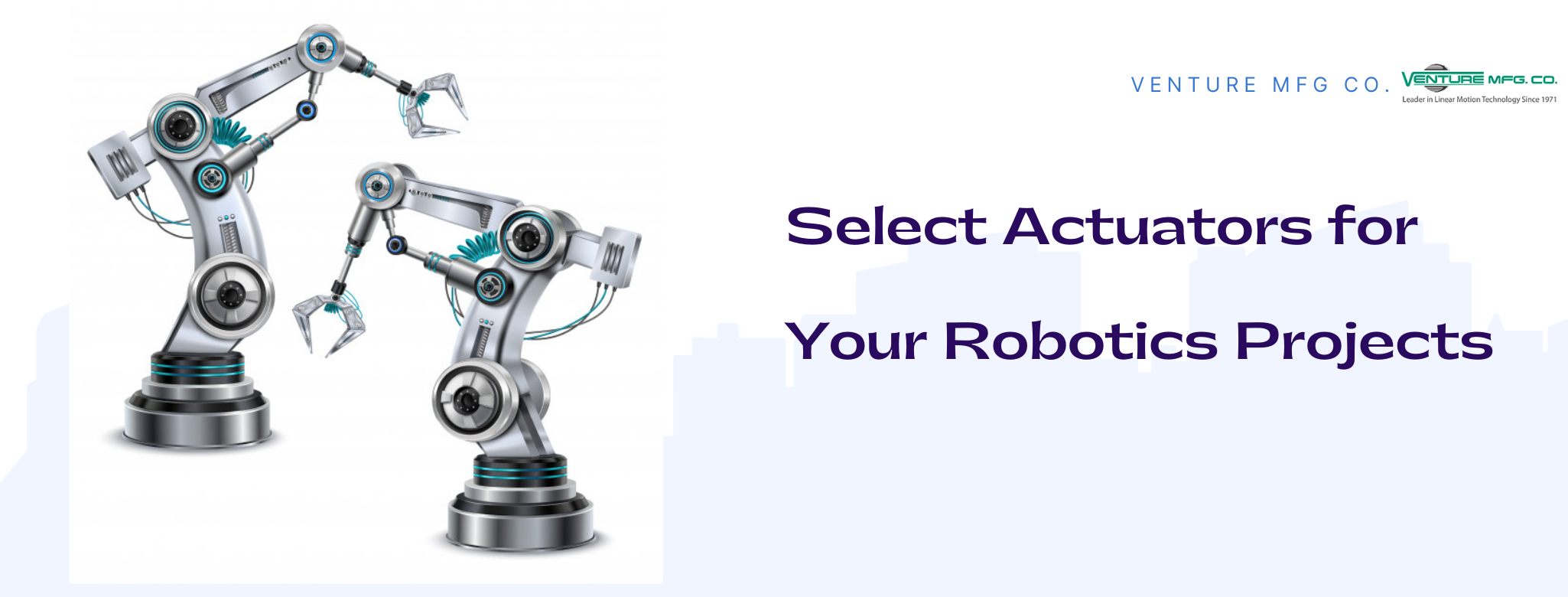Robot actuator selection is a critical component of robotics design, as it directly affects the performance, efficiency, and overall functionality of a robotic system. Actuators are the components responsible for converting energy into motion, allowing robots to interact with their environment and perform tasks. With the wide range of actuator types and technologies available, selecting the most suitable actuator for a specific robotic application can be a challenging task. In this article, we will delve into the world of robot actuator selection, exploring the different types of actuators, their characteristics, and the factors to consider when making a selection.

Types of Robot Actuators
There are several types of robot actuators, each with its own unique characteristics, advantages, and disadvantages. The most common types of actuators include:
- Electric Motors: Electric motors are one of the most widely used actuators in robotics. They are available in various types, including DC motors, stepper motors, and servo motors. Electric motors are known for their high precision, reliability, and ease of control.
- Hydraulic Actuators: Hydraulic actuators use fluid pressure to generate motion. They are commonly used in heavy-duty applications, such as robotic arms and grippers, where high forces and torques are required.
- Pneumatic Actuators: Pneumatic actuators use compressed air to generate motion. They are often used in applications where high speeds and low costs are required, such as in pick-and-place robots.
- Piezoelectric Actuators: Piezoelectric actuators use piezoelectric materials to generate motion. They are known for their high precision, low power consumption, and fast response times.
- Shape Memory Alloy (SMA) Actuators: SMA actuators use shape memory alloys to generate motion. They are known for their high force-to-weight ratio, low power consumption, and silent operation.
Characteristics of Robot Actuators
When selecting a robot actuator, there are several characteristics to consider, including:
- Torque and Force: The amount of torque and force an actuator can generate is critical in determining its suitability for a specific application.
- Speed and Acceleration: The speed and acceleration of an actuator determine its ability to perform tasks quickly and efficiently.
- Precision and Accuracy: The precision and accuracy of an actuator determine its ability to perform tasks with high repeatability and reliability.
- Power Consumption: The power consumption of an actuator determines its energy efficiency and overall cost of operation.
- Weight and Size: The weight and size of an actuator determine its suitability for mobile and compact robotic applications.
Factors to Consider in Robot Actuator Selection
When selecting a robot actuator, there are several factors to consider, including:
- Application Requirements: The specific requirements of the application, such as the type of task, payload, and operating environment.
- Actuator Type: The type of actuator, such as electric, hydraulic, or pneumatic, and its characteristics.
- Robot Design: The design of the robot, including its kinematics, dynamics, and control systems.
- Safety and Reliability: The safety and reliability of the actuator, including its ability to withstand extreme temperatures, vibrations, and other environmental factors.
- Cost and Maintenance: The cost and maintenance requirements of the actuator, including its purchase price, operating costs, and replacement parts.
Robot Actuator Selection Process
The robot actuator selection process involves several steps, including:
- Define Application Requirements: Define the specific requirements of the application, including the type of task, payload, and operating environment.
- Research Actuator Options: Research the different types of actuators available, including their characteristics, advantages, and disadvantages.
- Evaluate Actuator Performance: Evaluate the performance of each actuator option, including its torque, speed, precision, and power consumption.
- Consider Robot Design: Consider the design of the robot, including its kinematics, dynamics, and control systems.
- Select Actuator: Select the actuator that best meets the application requirements and robot design.
Frequently Asked Questions (FAQ)
- What is the most common type of actuator used in robotics?
The most common type of actuator used in robotics is the electric motor. - What are the advantages of hydraulic actuators?
Hydraulic actuators offer high forces and torques, making them suitable for heavy-duty applications. - What are the disadvantages of pneumatic actuators?
Pneumatic actuators are often noisy and require a compressed air supply, which can be a limitation in some applications. - What is the difference between a DC motor and a servo motor?
A DC motor is a type of electric motor that uses direct current to generate motion, while a servo motor is a type of electric motor that uses feedback control to achieve high precision and accuracy. - How do I select the right actuator for my robotic application?
To select the right actuator for your robotic application, define your application requirements, research actuator options, evaluate actuator performance, consider robot design, and select the actuator that best meets your needs.
Conclusion
Robot actuator selection is a critical component of robotics design, as it directly affects the performance, efficiency, and overall functionality of a robotic system. With the wide range of actuator types and technologies available, selecting the most suitable actuator for a specific robotic application can be a challenging task. By considering the characteristics of robot actuators, such as torque, speed, precision, and power consumption, and evaluating the factors to consider in robot actuator selection, such as application requirements, actuator type, and robot design, you can make an informed decision when selecting a robot actuator. Remember to research actuator options, evaluate actuator performance, and consider robot design to ensure that you select the actuator that best meets your application requirements. With the right actuator, your robotic system will be able to perform tasks efficiently, effectively, and reliably.
Closure
Thus, we hope this article has provided valuable insights into Introduction to Robot Actuator Selection. We appreciate your attention to our article. See you in our next article!
